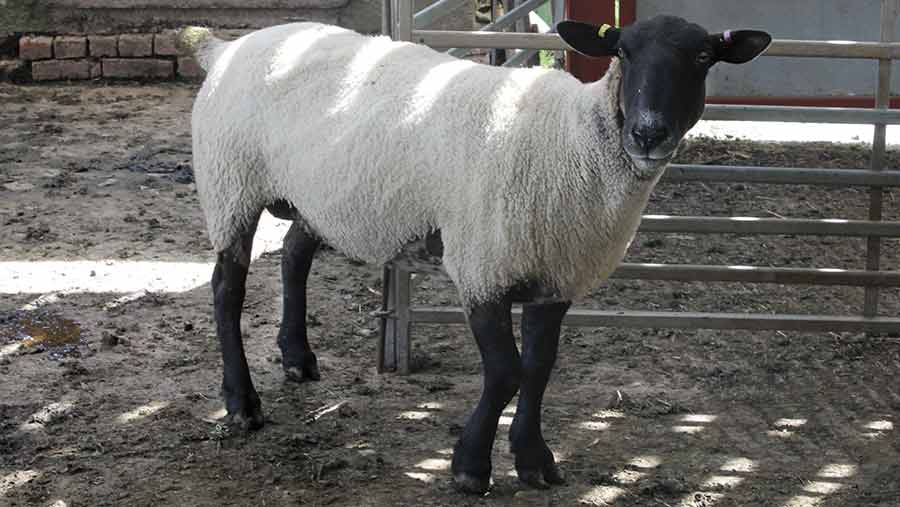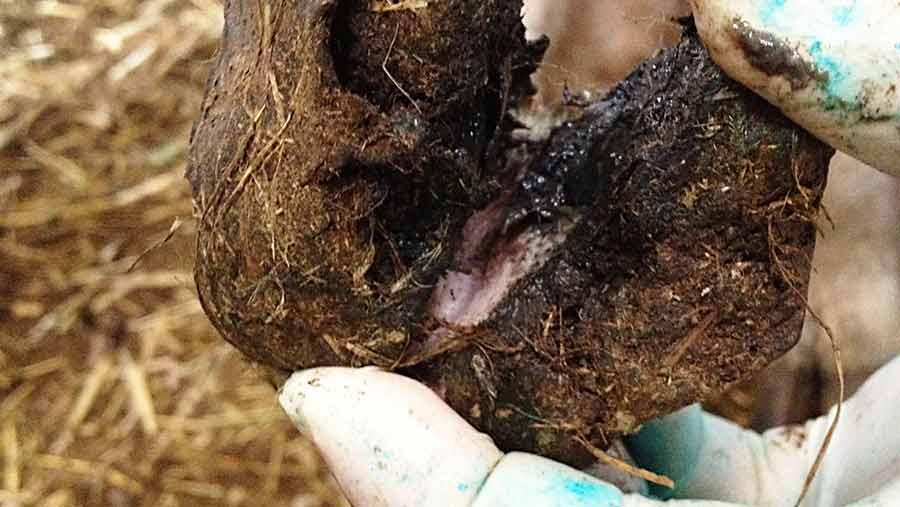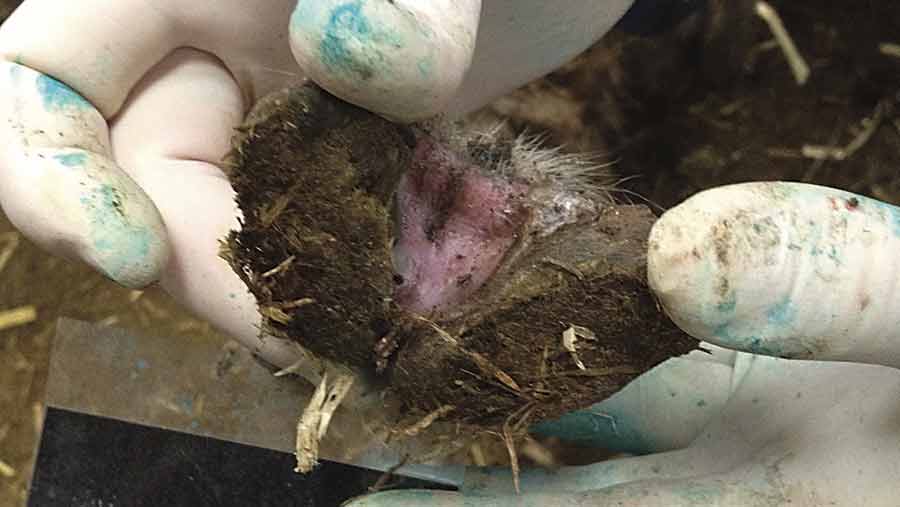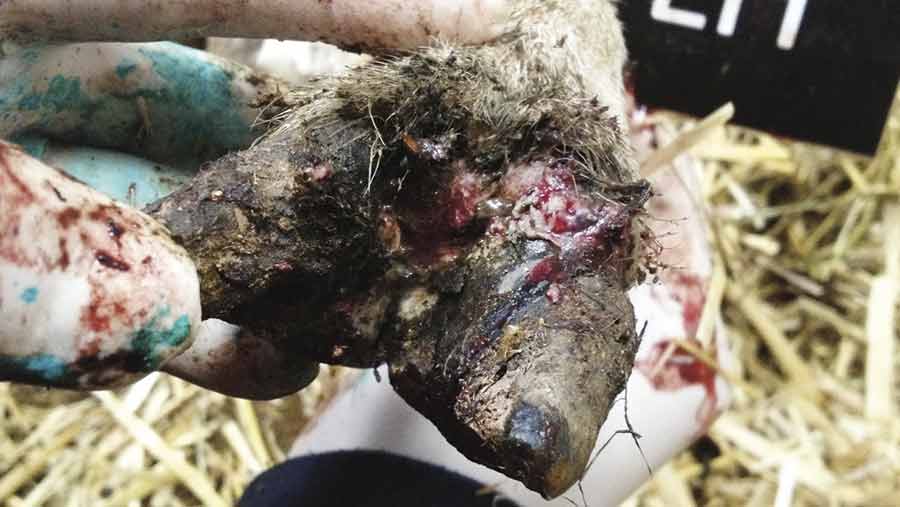How to correctly diagnose and treat the main causes of sheep lameness
Sheep farmers are still failing to accurately diagnose lameness, which is hampering cure rates on UK farms, vets have warned.
The three main foot diseases that affect sheep are Codd, foot-rot and scald.
However, farmers sometimes misdiagnose cases which means appropriate treatment and prevention may be delayed.

Scald can be common in lambs and is fairly easily treated. However in adult sheep scald is usually a precursor to foot-rot and therefore treatment involves the use of an injectable antibiotic and topical treatments explained sheep vet Phillipa Page.
See also: How one sheep farmer has cut lameness using the five-point plan
“A few farmers say they tried vaccinating and it didn’t work. It’s often because they haven’t used it properly or because they have misdiagnosed,” she told farmers at a sheep lameness event at Home Farm, Allensmere, Hereford, organised by Countrywide Farmers and Belmont Vets.
Vaccinating correctly
Mrs Page, from Flock Health Ltd and Wood Veterinary Group, Gloucester, said a common mistake made by farmers when vaccinating against foot-rot was failing to give sheep the correct number of vaccines and not discussing a lameness treatment plan first with a sheep vet or adviser.
She added: “Farmers will [often] just give one vaccination. At the start of an initial outbreak some farmers need to give two injections six weeks apart and then one at weaning and a second at scanning.”
This ensures the flock is protected for the whole 12 months, she explained.
“Eventually, providing you are following the five-point plan, you could get it down to once a year or if you are a closed flock you maybe able to stop its use or use only before known periods of risk,” said Mrs Page.
Misdiagnosing
However, she said correct diagnosis was crucial alongside being honest about the severity of lameness within your flock, as this can affect the control challenge.
“Successful farmers that have had foot-rot and reduced it to manageable levels have used the five point plan, including vaccinating. [But] getting the right diagnosis is essential. Where we misdiagnose things we see failures.”
Caroline Rank from Belmont Vets said the best starting point was to discuss a control plan with your vet as treatment can vary depending on the farm’s infrastructure and lameness prevalence.
“Treatment is very farm specific so you need to speak to your vet.”
A recap on symptoms
Here Mrs Page and Ms Rank provide a recap on the main symptoms of foot-rot, Codd and scald and explain how to distinguish between the three.
Foot-rot

Foot-rot © Fiona Lovatt
Cause: Dichelobacter nodosus and Fusobacterium necrophorum bacteria
Symptoms:
- Infectious between individual sheep and will survive in the environment up to 14 days.
- Foul smell
- Varying degrees of lameness within the flock
- It starts in between the hoof claw (the interdigital space)
- It develops to under-run the sole of the hoof, unlike Codd which starts at the top of the hoof
- Dark black, grey and bleeding lesions present in the sole of the hoof leading to hoof wall separation
Treatment and prevention:
- Prompt treatment of affected sheep to improve the chances of cure and reduce spread
- Systemic injectable antibiotics
- Five-point plan
- Foot bathing is not effective at curing foot-rot and may encourage spread of the disease
Scald

Scald © Fiona Lovatt
Cause: Dichelobacter nodosus and Fusobacterium necrophorum bacteria
Symptoms:
- Reddening and moistness in the interdigital space
- White, pasty scum on top
- Sore
- Can get large numbers of sheep infected with it
- Often develops into foot-rot in adult sheep
- Lambs at grass are particularly susceptible in the summer as long grass and wet underfoot conditions can allow infection to enter
Treatment and prevention:
- Foot bathing in lambs is effective, but adult sheep need antibiotics as it will often progress into foot-rot.
- Immediate treatment of affected lambs and sheep to reduce the effects of lameness and improve the chances of cure
Codd

CODD © Fiona Lovatt
Cause: Treponeme bacteria
Symptoms:
- Starts at the top of the hoof along the coronary band (where the hoof meets the hair)
- Causes hair loss as the initial lesion leads to inflamed skin and then an open bleeding ulcer-type lesion
- Up to 40% of the flock can be affected
- Progresses down the hoof (opposite to foot-rot)
- Sheep are often severely lame and can be seen hopping
- It leads to detachment of the hoof from the horn and exposes the very sensitive tissues underneath
- Extremely contagious between sheep and possibly (current area of research) from hoof-trimming equipment, hands and the environment
Treatment and prevention:
- Prompt treatment is essential – seek advice
- Injectable antibiotics
- Following the five point plan – particularly quarantine – do not buy this condition into your flock
- Seek veterinary advice to deal with Codd in the flock
